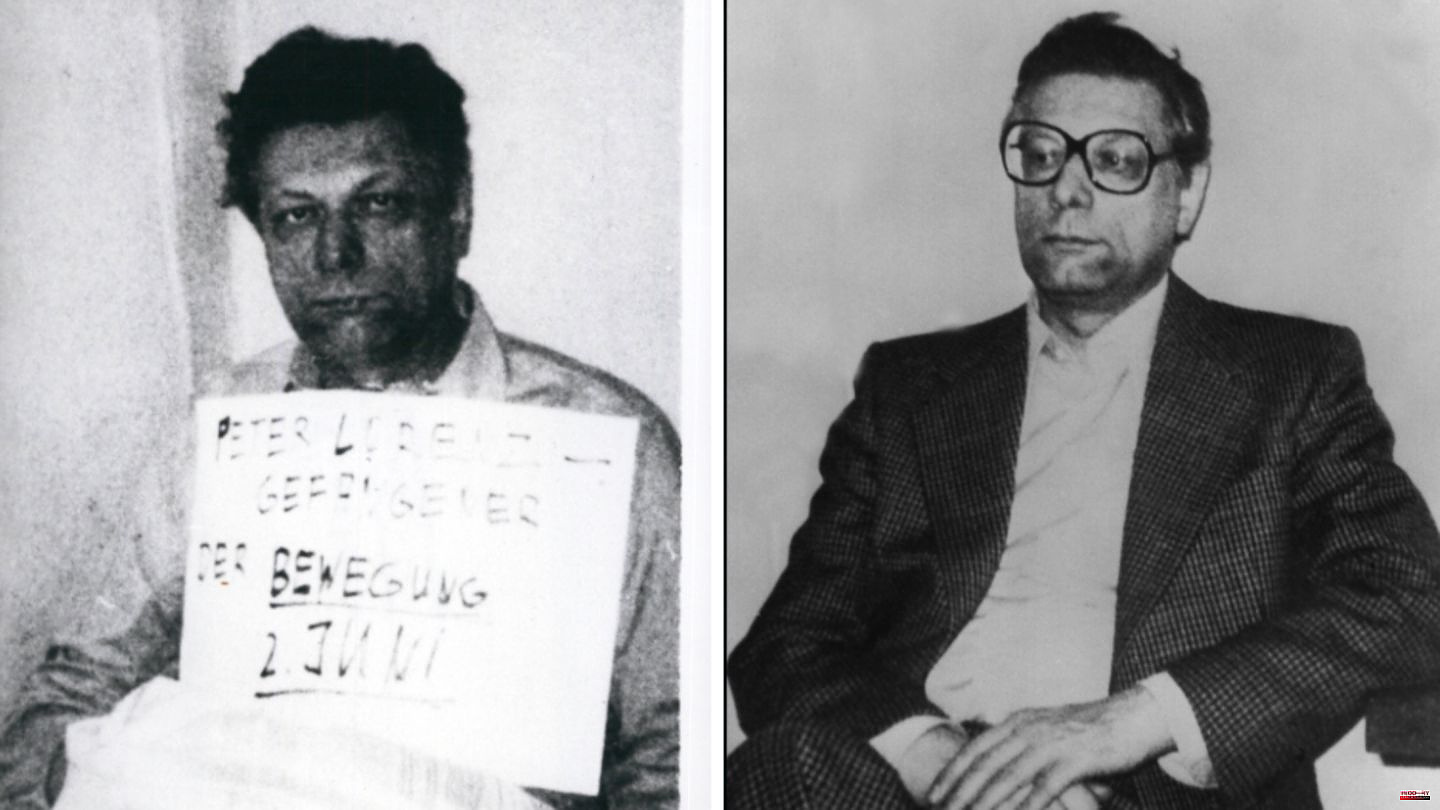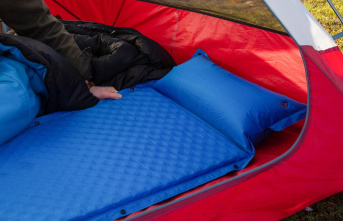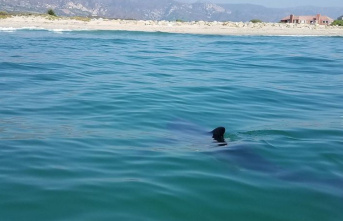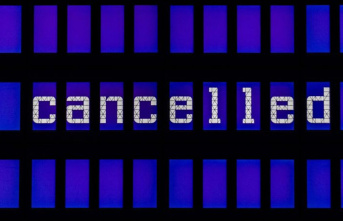It is February 27, 1975 and three days until the election of the Berlin House of Representatives. Peter Lorenz is the CDU's top candidate. The 53-year-old can hope for the office of mayor. That morning, around nine o'clock, he has his chauffeur drive him to the office. Just a few meters from his house, he was forced to stop by a truck that was parked sideways. A car rams the company car. The driver is hit with an iron bar disguised as a broomstick, and the politician is kidnapped. It is the first time in the history of the Federal Republic of Germany that a politician has been kidnapped by terrorists.
At around 1:30 p.m., his abandoned company car was found in an underground car park in Charlottenburg. The windscreen is missing, there is a cannula with a plastic protection in the car. Investigators believe the politician was drugged.
Police chief Klaus Hübner, who knows Lorenz personally, initiates the largest manhunt in Berlin's history. 4,000 officers are deployed. A number of apartments and houses are searched, roadblocks set up and thousands of cars searched. An emergency hotline for incoming information will be set up. But there is no trace of the kidnappers and Peter Lorenz.
The next morning a letter was received by the German Press Agency in Berlin. A Polaroid photo of Lorenz is enclosed. He is sitting on a mattress and has a cardboard sign hanging from his neck that reads: "Peter Lorenz, prisoner of the June 2 Movement." The terrorists, a left-wing extremist group close to the RAF, have the CDU politician in their power. For them, Lorenz is a "representative of the reactionaries and the bigwigs, responsible for piecework rushing and spying on the workplace."
In exchange for him, they demand the release of six imprisoned terrorists within 72 hours: Horst Mahler, Verena Becker, Gabriele Kröcher-Tiedemann, Ingrid Siepmann, Rolf Heissler and Rolf Pohle. In addition, an airplane and 20,000 marks in cash per prisoner are to be provided.
The crisis management team made up of politicians and security experts meets for the first time in the Schöneberg town hall. The party leaders stop the election campaign. The dismay, but also the helplessness is great. For the first time in the Federal Republic and Berlin, a politician has been kidnapped. And even before the demands of the terrorists are known, the governing mayor Klaus Schütz specifies a route that will be followed in the following days: "We have to get Peter Lorenz released. All other considerations have to be subordinate to that". Since you don't want to annoy the kidnappers in any way, no open search measures are taken. But behind the scenes everything is being prepared for the release of the terrorists. According to the kidnappers, Berlin's ex-mayor Heinrich Albertz should accompany them abroad.
On March 2, elections will take place as planned and the abductee will be declared the winner. For the first time, the CDU is the strongest party in the Berlin House of Representatives and Lorenz is elected CDU state chairman for another two years with 272 of 282 votes. However, Klaus Schütz, who can rely on the majority of the votes of a coalition of SPD and FDP, remains governing mayor.
On the morning after the election - Lorenz has been in the kidnappers' power for five days - five terrorists who have been released board a Lufthansa plane in Frankfurt am Main. The television broadcasts the images live. Horst Mahler had refused to take the flight into the unknown. After a more than ten-hour odyssey, the Boeing lands in southern Yemen, whose government takes in the freedmen at Bonn's urging.
The next day, Albertz returns with a handwritten note in his pocket with a message from the freedmen to the kidnappers. The broadcaster Freies Berlin interrupts its broadcasts at 6:09 p.m.: "We greet the comrades in Germany who are outside of jail and who are still in jail. We will put our energy into it so that it will soon be a day like this for you too, so beautiful like today, will dawn". These words are the signal for the kidnappers to release Peter Lorenz. A few hours later, at midnight, he calls from a phone booth in a park in Wilmersdorf.
For five and a half days he sat in the basement of a shop on Schenckendorfstrasse in Kreuzberg, to which he was shipped in a wooden box. The rooms had previously been rented as a second-hand shop. The kidnappers described the hiding place as a "people's prison".
Just a few hours after his release, Lorenz presented himself to the journalists at a press conference: "Ladies and gentlemen, may I ask for your understanding in advance that I cannot be available to you for an unlimited period of time because my physical and psychological situation is still there doesn't allow it. I slept three hours last night. Even before that, as you can imagine, not that regularly."
When asked by a journalist whether he had expected the kidnappers to execute or murder him in cold blood, he replied: "Yes. I had faith in God, but of course I was also afraid, especially in all situations in which it was definitely in the realm of the It was possible that certain ideas of the kidnappers could not be enforced." However, he also emphasizes that the kidnappers always behaved correctly towards him. "That means I've always had washing facilities, I've always had food, and they haven't harassed or bullied me in any particular way."
The police caught 15 suspects within a year. In October 1980, five of them were sentenced to lengthy prison terms in connection with the kidnapping.
Immediately after the end of the kidnapping, an open discussion began in the Federal Republic as to whether the decision to put Lorenz's life before reasons of state was the right one. On March 6, one day after the CDU politician was released, the Bonn crisis management team declared that "according to the emergency paragraph, he had come to the conclusion that in order to protect concrete life, the impairment of the state's right to criminal prosecution and the execution of sentences was acceptable may be taken".
Federal Chancellor Helmut Schmidt makes it clear, however, that the Lorenz case cannot serve as a guide for similar situations. In the future, the federal government will use the means of the rule of law "with all consistency and severity". The Federal Minister of Justice at the time, Hans-Jochen Vogel, later explained in an interview: "I said even then that if we release these five, we will save Mr. Lorenz's life, but we will cause the deaths of people who we cannot yet identify . Because those who are freed do not retire (...) but continue their activities."
For the terrorists, the Peter Lorenz case becomes a kind of blueprint. On April 24, 1975, the RAF "Commando Holger Meins" stormed the German embassy in Stockholm and took 14 hostages. The release of four RAF members who are in prison in Stammheim, including Andreas Baader and Ulrike Meinhof, as well as 23 other RAF prisoners, is being demanded. The action is to be modeled after the Lorenz kidnapping. This time, too, the detainees are to be flown out to a location of their choice. The hostage, the German officer and diplomat Andreas Baron von Mirbach, is supposed to persuade the Swedish police to withdraw by telephone.
But the police remain in the building and the father of twins is shot dead. In the evening, the RAF commando shoots a second hostage: the economics officer Heinz Hillegaart. The terrorists threaten to kill another hostage every hour. A detonation shook the building shortly before midnight. The explosive charge set by the terrorists explodes uncontrollably. When fleeing the burning house, the police ran straight into their arms. One of them, Ulrich Wessel, succumbed to his serious injuries on the spot. Another commando member, Siegfried Hausner, dies after his extradition in Germany due to his severe injuries.
Two and a half years later, Red Army Faction terrorists kidnapped and murdered Employer President Hanns-Martin Schleyer when they realized that the state would not allow itself to be blackmailed again. The leaders of the RAF, Andreas Baader, Gudrun Ensslin and Jan-Carl Raspe, who were supposed to be freed, then commit suicide. Irmgard Möller survived badly injured.
The kidnapping of Peter Lorenz was the June 2 Movement's only successful attempt to exchange convicts for a hostage. On December 6, 1987, at the age of 65, Lorenz died of heart failure in his home in Zehlendorf. According to the then Chancellor Helmut Kohl, Lorenz was "never the same again" after the kidnapping.
Sources: ARD, RBB, ZDF, "Berliner Woche", Konrad Adenauer Foundation, Social History Portal, DPA












